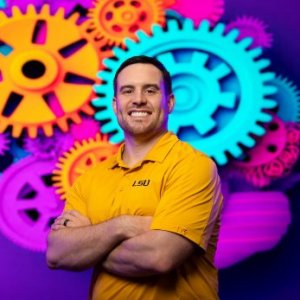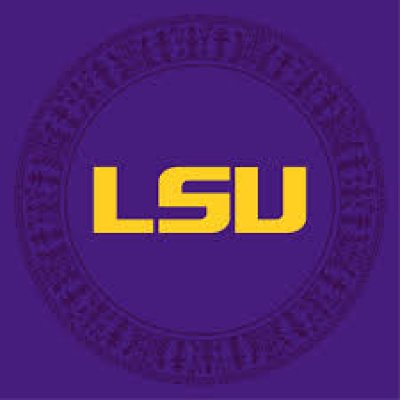Nicholas Fears
Assistant Professor Louisiana State University
- Baton Rouge LA
Dr. Fears is an expert on the development of motor skills, sensory processing, and activities of daily living in neurodiverse people.
Areas of Expertise
Biography
Dr. Fears’s research focuses on the development of motor skills, sensory processing, and activities of daily living in neurodiverse people. He is interested in how dynamic relationships between motor, visual, and cognitive processes affect the performance of activities of daily living in neurodivergent populations (i.e., autism, developmental coordination disorder). The goal of his research is to improve the lives of neurodivergent people by adapting their environments and providing support for them to achieve their goals. Dr. Fears is the director of the Human Development & Daily Life (HuDDL) Lab: https://faculty.lsu.edu/huddllab/.
Research Focus
Visuomotor Development & Activities of Daily Living
Dr. Fears’s research focuses on motor and visuomotor development underlying everyday tasks in neurodivergent youth, particularly autism and developmental coordination disorder. He uses eye-tracking, motion capture, and cognitive-motor modeling to uncover how movement, perception, and cognition interact and to design interventions that foster functional independence.
Answers
- What is a common misconception about autistic people?

The most common misconception about autistic people is that their “functioning level” is fixed and they are either high support needs or low support needs, but many of autistic people’s support needs change based on tasks, interactions with others, and the world around them.
- What is the most interesting thing you have learned through your research with autistic individuals?

The most interesting thing that I have learned through my research with autistic individuals is how support for their sensory and motor needs changes their interactions with others and their participation in activities in their homes, schools, work, and communities.
- As school is back in session, what is the most important piece of advice you can offer caregivers and teachers of autistic students?

Autistic students, and students in general, have difficulties with change and unpredictability. This makes the transition from breaks back to school difficult. To make this transition easier and more enjoyable, it can be helpful for caregivers and teachers to provide spoken and visual timelines (or stories for younger students) of what they will be doing before they begin and throughout the transition.
Education
Tulane University
Ph.D.
Psychology
2019
Tulane University
M.S.
Psychology
2016
Indiana University Bloomington
B.S.
Psychology
2013
Accomplishments
Lolas E. Halverson Motor Development Young Investigator Award
2025
International Society for Autism Research Workshop Award
2022
Tulane 34 Award
2019
Graduate Student Mentoring Award
2019
Media Appearances
LSU assistant professor awarded $50,000 grant for developmental app that will help children with autism
LSU Reveille online
2025-06-16
LSU research professor Dr. Nicholas Fears received a $50,000 grant to adapt an app to help autistic preschoolers develop motor skills. The app will teach six different motor skills over 12 weeks using space-themed games.
The grant is sponsored by the Healthy Weight Research Network, which will aid LSU’s research team to adapt Mission Play, originally developed by Dr. Amanda Staiano at the Pennington Biomedical Research Center.
“Right now we’re working with families and showing them the app and what it looks like and asking them what would make it easier for their kid to participate,” Fears said.
LSU adapting motor skills app to meet needs of autistic children
WBRZ 2 tv
2025-05-26
LSU Assistant Professor Nick Fears and the Human Development and Daily Life Lab in the School of Kinesiology are adapting the app to meet the needs of autistic children and their families as they learn motor skills like jumping, kicking, throwing, and catching.
The Mission: Play app, created by Amanda Staiano, an associate professor of Pediatric Obesity and Health Behavior at Pennington Biomedical Research Center, and Kip Webster from the University of Tennessee, partnered with Fears to adapt this app for autistic children.
"Our goal long-term is that they'll be able to live the lives that they want to live, access the participation and activities they want to do, and live independently and as fully engaged lives as they dream of," Fears said.
Articles
#DCD/Dyspraxia in Real Life: Twitter Users’ Unprompted Expression of Experiences With Motor Differences
Journal of Motor Learning and Development2023
Little is known about adults’ experiences with developmental coordination disorder (DCD; sometimes also referred to as dyspraxia). Social media is an accessible opportunity for those who identify as dyspraxic or as having DCD to provide valuable insight into the lifespan impact of this condition on functional ability, participation, compensatory strategies, and well-being. We used the Twitter research application programming interface to identify users who self-identified with the keywords Developmental Coordination Disorder, #DCD, #dyspraxic (or # dyspraxia), or clumsy in their profile descriptions between October 10 and November 10, 2021. During that period, 818 tweets were harvested with 524 remaining after removing duplicates (e.g., multiple promotions of a single resource) and unrelated tweets.
Identity and Discourse Among #ActuallyAutistic Twitter Users With Motor Differences
Journal of Motor Learning and Development2023
Despite a growing awareness of the prevalence of motor differences in the autistic community, their functional impact is poorly understood. Social media offers the ideal setting to observe this discourse in a less-contrived setting than lab-based structured interviews. The aims of the present study were (a) to determine the proportion of Twitter users who self-identify as autistic and dyspraxic/having developmental coordination disorder, relative to autistic alone, and (b) to identify common themes emerging from two moderated chat threads with motor-related prompts.
Harvesting Twitter Data for Studying Motor Behavior in Disabled Populations: An Introduction and Tutorial in Python
Journal of Motor Learning and Development2023
Social media platforms are rich and dynamic spaces where individuals communicate on a person-to-person level and to broader audiences. These platforms provide a wealth of publicly available data that can shed light on the lived experiences of people from numerous clinical populations. Twitter can be used to examine individual expressions and community discussions about specific characteristics (e.g., motor skills, burnout) associated with a diagnostic group. These data are useful for understanding the perspectives of a diverse, international group of self-advocates representing a wide range of clinical populations.
Motor differences in autism during a human-robot imitative gesturing task
Clinical Biomechanics2023
Difficulty with imitative gesturing is frequently observed as a clinical feature of autism. Current practices for assessment of imitative gesturing ability–behavioral observation and parent report–do not allow precise measurement of specific components of imitative gesturing performance, instead relying on subjective judgments. Advances in technology allow researchers to objectively quantify the nature of these movement differences, and to use less socially stressful interaction partners (e.g., robots). In this study, we aimed to quantify differences in imitative gesturing between autistic and neurotypical development during human-robot interaction.
Community‐based postural control assessment in autistic individuals indicates a similar but delayed trajectory compared to neurotypical individuals
Autism Research2023
Autistic individuals exhibit significant sensorimotor differences. Postural stability and control are foundational motor skills for successfully performing many activities of daily living. In neurotypical development, postural stability and control develop throughout childhood and adolescence. In autistic development, previous studies have focused primarily on individual age groups (e.g., childhood, adolescence, adulthood) or only controlled for age using age‐matching. Here, we examined the age trajectories of postural stability and control in autism from childhood through adolescents using standardized clinical assessments.
Motor problems in autism: Co-occurrence or feature?
Developmental Medicine & Child Neurology (DMCN)2023
Motor features of autism have long been acknowledged by clinicians, researchers, and community stakeholders. Current DSM-5 and ICD-11 guidelines allow clinicians to assign a co-occurring diagnosis of developmental [motor] coordination disorder (DCD) for autistic individuals with significant motor problems. DCD is characterized by poor motor proficiency with an onset of symptoms in early development. Studies have shown considerable overlap in the behavioral motor features observed in autism and DCD. However, others indicate that motor problems in autism and DCD may stem from different underlying sensorimotor mechanisms.
Motor skills predict adaptive behavior in autistic children and adolescents
Autism Research2022
It is well-documented that intelligence quotient (IQ) is a poor predictor of adaptive behavior scores in autism, with autistic children having lower adaptive behavior scores than would be predicted based on their IQ scores. Differences in motor skills may explain the variability in their adaptive behavior scores. The current study examined how motor skills might explain autistic individuals' low adaptive behavior scores and which individual components of IQ (i.e., verbal comprehension and perceptual reasoning) and motor skills (i.e., manual dexterity, aiming and catching, and balance) may drive this effect. We examined the associations between IQ, motor skills, calibrated severity, and adaptive behavior scores in 45 autistic children and adolescents. Using a t-test, we found a significant difference (p
Autistic Children Use Less Efficient Goal-Directed Whole Body Movements Compared to Neurotypical Development
Journal of Autism and Developmental Disorders2022
Autistic children have differences in their movements which impact their functional performance. Virtual-reality enables researchers to study movement in safe, engaging environments. We used motion-capture to measure how 7–13-year-old autistic and neurotypical children make whole-body movements in a virtual-reality task. Although children in both groups were successful, we observed differences in their movements. Autistic children were less efficient moving to the target. Autistic children did not appear to use a movement strategy. While neurotypical children were more likely to overshoot near targets and undershoot far targets, autistic children did not modulate their strategy. Using kinematic data from tasks in virtual-reality, we can begin to understand the pattern of movement challenges experienced by autistic children.
An Eye-Tracking Method for Directly Assessing Children's Visual-Motor Integration
Physical Therapy2019
Background
Visual-motor integration is an integral component of many adaptive behaviors and has been linked to school readiness. In young school-age children, visual-motor integration is typically assessed with the Beery-Buktenica Developmental Test of Visual Motor Integration (Beery VMI), a standardized instrument that measures children's ability to copy 2-dimensional forms. The Beery VMI is scored according to children's final written product, but does not directly measure the process of visual-motor integration that underlies children's form copying.
Objective
We describe a new way of directly assessing visual-motor integration in real time. We demonstrate how head-mounted eye-tracking technology for young children can be used to describe the dynamics of visual-motor integration when children copy forms.
Affiliations
- International Society for Autism Research
- International Motor Development Research Consortium
- LSU Early Childhood Education Institute
- LSU Multidisciplinary Institute for Neuroscience Discover
Research Grants
Pilot Clinical Trial of an App-based Motor Skills Intervention for Reducing Motor Difficulties in Autistic Children
Career Development Award | Autism Research Program – Department of Defense
2025-2028
Quantifying the impact of visuomotor planning and execution during activities of daily living in autistic children
Research Competitiveness Award | Louisiana Board of Regents
2025-2028
Adapting a Play-based, Parent-mediated Motor Skills Intervention App to Reduce Motor Difficulties and Increase Physical Activity in Autistic Preschoolers
Pilot and Feasibility Grant | Maternal Child Health Bureau's Healthy Weight Research Network
2024-2026



